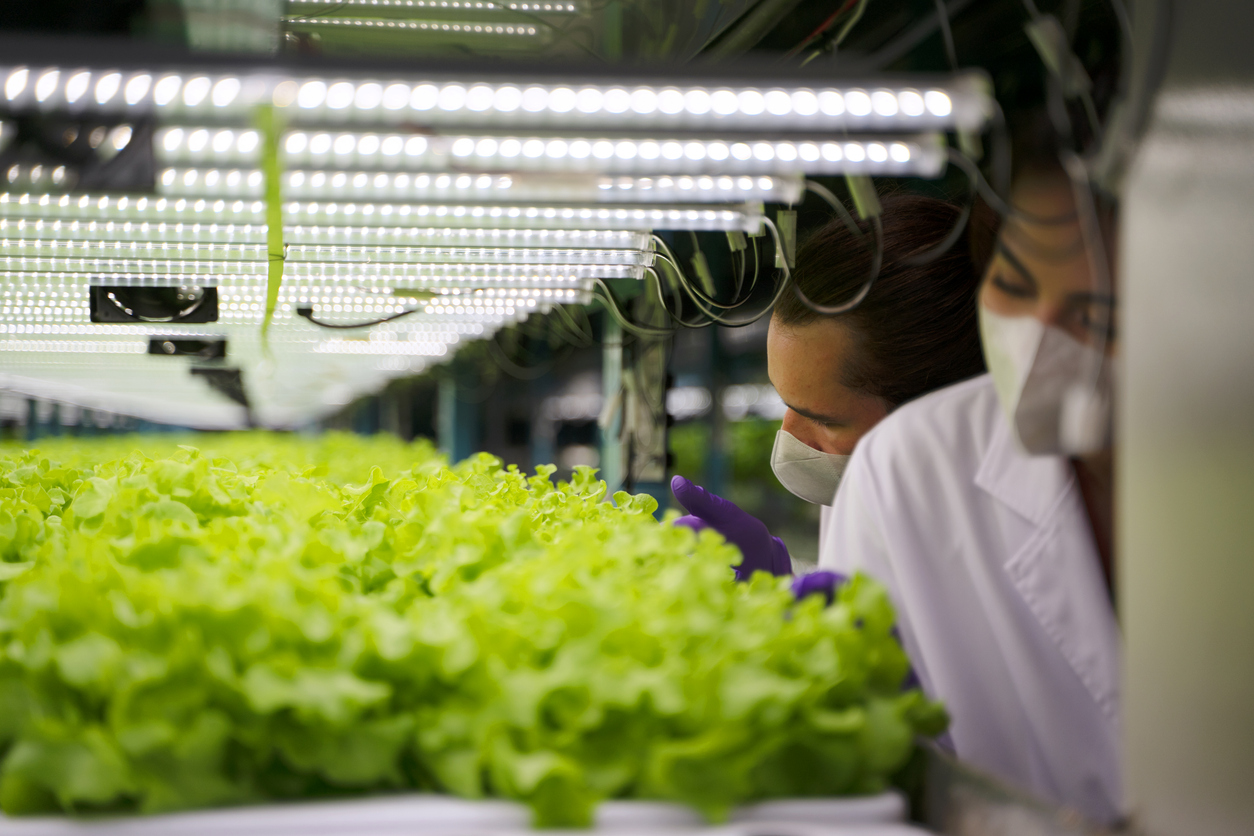
James Prietzel, Product Manager at Intelligent LED Solutions (ILS)
James is the ILS Product Manager for everything related to LEDs and has been with ILS since 2012. James is dedicated to understanding the latest technologies and innovations from leading suppliers in the OptoElectronics world, from optics, to LEDs and to Intelligent LED Drivers.
LEDs are producing revolutionary advancements in many areas of technology and life, but none more so important than in horticulture. The complexity and knowledge required is growing daily, with different plants requiring different spectral illumination and control.
This article will explore the uses of Ultraviolet (UV) LED lighting in horticulture, the benefits and where it can be applied in the growing process. We will explore the many ways in which ultraviolet can benefit the horticultural market and explain how UV light can benefit wildlife, such as bees and wasps, during the growing process and enhance growth potential.
What is ultraviolet?
Ultraviolet is a radiation on both the visible and non-visible spectrum, the shorter the wavelength, the less visible and harmful it can be. There are three different kinds of ultraviolet radiation based on wavelength.

- UVA radiation (from 315 to 420 nm). Barely visible to the human eye, UV-A has the longest wavelength, is the least harmful to the human eye and is the most efficient. Most of the UV-A radiation emitted from the sun passes through the ozone layer and, thus, it is the most abundant form of ultraviolet.
- UVB radiation (from 280nm to 315nm). Primarily used within water sterilisation and decontamination, ensuring that mould and spores do not grow on plants. This is done by limiting bacteria in the water that moulds and spores would usually cling to and develop from.
- UVC radiation (typically below 280nm). These wavelengths are usually filtered out through the ozone layer and are not usually present in sunlight. However, with the correct doses, UV-C can in fact increase the growth of plants. This wavelength ensures that pesticides and moulds that can be found during plant growth are limited/killed off, allowing the plant to flourish in optimal growing conditions.
Why do plants need ultraviolet light?
Ultraviolet light is extremely important for plant growth. In safe doses, ultraviolet light helps plants and crops produce essential plant oils which not only enhance the flavour and smell of fruit but also helps the plants protect themselves from excessive ultraviolet exposure, acting as their own natural sunblock.
This natural protection ensures that the internal processes of the plant are protected and ensures optimal growing conditions. Plants, in this respect, are very clever in that they will only absorb the correct level of ultraviolet needed for this self-protecting process to kick in and no more.
Ultraviolet is outside the photosynthetically active waveband (PAR – The total energy that a plant needs, 400 – 700nm), but it is biologically active and regulates plant growth. Some common positive effects of ultraviolet on crops include: –
- Inhibition of extension growth (shorter stems and smaller leaves)
- Increase in leaf thickness and waxiness (thicker cuticles)
- Greater leaf coloration (especially for plants with purplish leaves such as red-leaf lettuce, purple millet, and purple fountain grass).
Research has also shown that plants which are subjected to ultraviolet radiation tend to have fewer pests feeding on them, show increases in pollination and provide an overall increase in yield.
The inclusion of UV-C within horticultural LED grow lights will enable plants to increase their height. However, you do need to be very careful with UV-C as typically, if overdosed, the plant can be stunted in growth. It is recommended a dose no higher than 15 minutes per week is applied. This is recommended for all plant growth (including trees).
What are the individual benefits of UVA, UVB and UVC in horticulture?
Using targeted UV wavelengths offers an energy efficient and optimal lighting solution compared with other existing options available on the market. The inclusion of ultraviolet LEDs allows the growing environment to replicate daylight better and lengthen growing hours. This is applicable to environments both with and without sunlight.
UV-A is the wavelength that is most commonly found within the filtered sunlight/full spectrum. To have this included within your spectrum will increase a plant’s efficiency in photosynthesis. This is done by targeting the Chlorophyll A and B regions within the plant which absorbs the highest quantity of light from within the 400nm – 460nm range. When used in conjunction with far red wavelengths (720 – 740 nm), this will greatly increase the light absorption needed for photosynthesis.
A further benefit of using UV-A in plant growth relates to the difference in how a bee sees light compared to the human eye (which is explained in greater detail below). The use of UV-A enhances the growing environment and enables bees to pollinate the plants with ease.
UV-C, and less commonly UV-B are used to decontaminate water and surfaces as it kills virtually all microorganisms when concentrated. These high-energy wavelengths could potentially be delivered to plants to kill pathogens that may reside on leaves as well. Ultraviolet is also used by insects to help navigate to flowers. If the inside of a greenhouse is completely deficient of ultraviolet light, pollinators may have a difficult time locating flowers.
One thing however to take into consideration is that all elements of ultraviolet (UV-A, UV-B and UV-C) are harmful to humans and necessary precautions must be taken when operating in an environment which uses UV LED lighting. Workers should not look directly into the light; and the correct optical system must be used while it is in operation. It is advised that protective eyewear should be worn at all times during operation.
Is ultraviolet light important for pollination?
One of the most surprising aspects of ultraviolet light is that it is essential for bees to use as a reference point in pollination. In a recent study conducted by the USDA (United States Department of Agriculture), it was found that bees are responsible for around 80% of pollination and without ultraviolet, bees typically struggled to find the plants to pollinate and would die before being able to do so.
Ultraviolet is so important in this process. The way a bee’s receptors work is very different to how the human eye operates. Whilst the human eye is most sensitive to the green part of the spectrum, it has been found that bees are more sensitive to the non-visible ultraviolet side of the spectrum. So ultraviolet enhances the visibility of the pollen for the bee’s receptors and they appear as a “bullseye” for the bees to target.

Another reason UV is important for pollination is that bees can see three dimensionally, allowing them to judge depth and distance better, as well as seeing the whole circumference of an object. Human eyes however, tend to see in only two dimensions, meaning that we are only able to see the front of an object and not the back. Thus, without the inclusion of the ultraviolet wavelength, the bee’s receptors simply would not have a reference point, making pollination very difficult.
For any enquiries or further information, please contact +44 (0) 1635 294606 or info@i-hled.co.uk Or alternatively refer to our website https://www.i-hled.co.uk/











